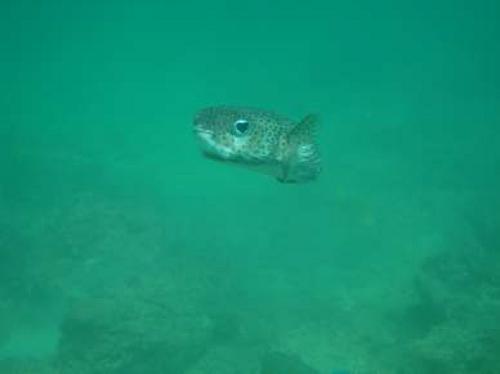Gustavo Adolfo Castellanos Galindo
Other projects
10 Sep 2009
Fish Tidal Migrations in Mangroves of the Tropical Eastern Pacific (Colombia): Potential Nursery Areas for Fishing Resources
12 Mar 2014
Mangroves as Providers of Ecosystem Services in the Tropical Eastern Tropical Region under the Influence of Climate Variability
The project aims at answering how does rocky reef fish assemblages in a marine protected area of the Colombian Pacific respond to tidal and lunar variations at sites with different seascape configurations.

Sunset at Punta Diego.
Spatial linkages between marine habitats can be established by the continuous movement of organisms during different stages of their life cycles. This process, often referred as habitat connectivity, is a critical aspect responsible for the maintenance of a large number of marine populations which depend on different habitats to survive. In near-shore ecosystems, mobile invertebrates and fishes are likely to display different movement pathways between habitats which may be influenced by several local processes. Two of these processes are represented by the tidal regimes and the seascape configuration in between habitats. Tidal variability, although a widely recognized force affecting coastal organisms, is often neglected in connectivity studies, thus its effects and importance remains largely unknown. On the other hand, the local seascape configuration of habitats has proven to influence to a great extent the choice of marine organisms for one or other habitat.

Freckled porcupinefish (Diodon holocanthus) looking at the diver.
The examination of these two important processes may provide useful insights to understand what determines the connectivity between habitats at local scales; which in turn could contribute to the establishment of successful management strategies within marine protected areas. In this way, the present project pretends to examine how reef fish movements into shallow rocky intertidal areas are determined by tidal variability and seascape characteristics in two near-shore areas of the Colombian Pacific (part of Eastern Tropical Pacific Seascape – ETPS area and the Tumbes-Chocó-Magdalena biodiversity hotspot).
To answer this question, a sampling campaign in the dry season will take place at the National Natural Park Ensenada de Utría. During sampling, underwater fish visual censuses will be carried out at four different sites and tidal stages (flood, ebb, high and low water). Observations at each of these sites will take place over nine permanent 25 x 2 m strip transects at mid intertidal, low intertidal and subtidal areas will (three per zone). The data gathered will be analysed in order to observe fish assemblage structure patterns in response to the tidal and seascape variability. The expected results will be incorporated to current conservation strategies leaded by the park authorities and the local fishermen.